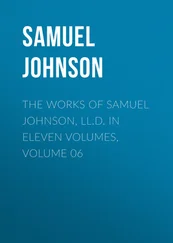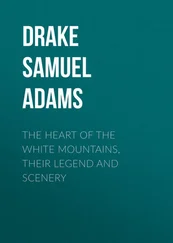Samuel Florman - The Aftermath
Здесь есть возможность читать онлайн «Samuel Florman - The Aftermath» весь текст электронной книги совершенно бесплатно (целиком полную версию без сокращений). В некоторых случаях можно слушать аудио, скачать через торрент в формате fb2 и присутствует краткое содержание. Город: New York, Год выпуска: 2001, ISBN: 2001, Издательство: Thomas Dunne books, Жанр: sf_postapocalyptic, на английском языке. Описание произведения, (предисловие) а так же отзывы посетителей доступны на портале библиотеки ЛибКат.
- Название:The Aftermath
- Автор:
- Издательство:Thomas Dunne books
- Жанр:
- Год:2001
- Город:New York
- ISBN:0-312-26652-9
- Рейтинг книги:5 / 5. Голосов: 1
-
Избранное:Добавить в избранное
- Отзывы:
-
Ваша оценка:
- 100
- 1
- 2
- 3
- 4
- 5
The Aftermath: краткое содержание, описание и аннотация
Предлагаем к чтению аннотацию, описание, краткое содержание или предисловие (зависит от того, что написал сам автор книги «The Aftermath»). Если вы не нашли необходимую информацию о книге — напишите в комментариях, мы постараемся отыскать её.
The Aftermath — читать онлайн бесплатно полную книгу (весь текст) целиком
Ниже представлен текст книги, разбитый по страницам. Система сохранения места последней прочитанной страницы, позволяет с удобством читать онлайн бесплатно книгу «The Aftermath», без необходимости каждый раз заново искать на чём Вы остановились. Поставьте закладку, и сможете в любой момент перейти на страницу, на которой закончили чтение.
Интервал:
Закладка:
Hours passed, then two days—three. Living in perpetual darkness, the concept of night and day became elusive. They slept, they woke, they paced up and down the corridors and into the public rooms, gathering in groups and talking, supporting each other the best they could. They returned to their cabins to nap fitfully or lie awake thinking about the unthinkable. Captain Nordstrom saw to it that meals were served on schedule, and this remnant of order helped to keep chaotic nightmares at bay.
The darkness, of course, was not just psychologically oppressive; it was literally the greatest danger that the survivors had to fear. According to the calculations of some catastrophe scientists, which Jane Warner shared with Nordstrom and Hardy, they might be in for a long siege of “nuclear winter” that would seal their doom.
However, after three days of gloom and ever-increasing cold, it suddenly began to rain. Torrents of water poured down, gradually washing particles from the sky. This was followed on the fourth day by brightening skies and moderating temperatures. Then rainbows appeared, surely the most resplendent display of color that any of them had ever seen. Many in the group, thinking of Noah and the Great Flood, took this as a sign from the heavens, a promise of salvation.
The returning sun brought with it the hope of life, but also a new health hazard. Considering the fires that had raged in the skies, the survivors had to assume that the ozone layer was probably devastated. Since their supplies of sunscreen lotion were limited, hats and long sleeves became the standard dress code. They all agreed that this was a small enough price to pay for survival.
When the New Year arrived, a week after the Event, conditions at sea were eerily normal. Still, nobody suggested that they observe the arrival of 2010, let alone celebrate the thirtieth anniversary of the American Association of Engineering Societies. The thought of that was too bizarre even to mention. There were a few prayer meetings, but that was about the extent of any commemoration ceremony or service.
Two days later—on the ninth day since the apparent end of the world—the captain decided to head cautiously toward shore, aiming first for Durban, which was to have been the next port of call. But when, on the following morning, the tenth day, they came within viewing distance of what should have been a large city, nothing could be seen other than piles of seeming rubble, with huge clouds of black smoke shrouding the hills behind. So the Queen of Africa headed slightly to the north, back toward Richards Bay.
Again they waited for the morning light, but again a mass of rubble was all that could be discerned along the shore. The enor mous dock facilities that the civil engineers had observed with such interest during their recent visit had been transformed into eccentrically contoured chunks of concrete. However, they could see hills rising inland, and—most welcome sight—several patches of green in the distance. There were some lingering black clouds, indicating the presence of scattered fires, but nothing as forbidding as the scene at Durban. Also, for one long stretch they could see a sand beach with fairly calm surf, a likely landing site for small boats. All in all, the prospect appeared relatively welcoming.
Yet even as they sailed slowly at what seemed to be a safe distance offshore, there was suddenly a crunching sound, and the ship abruptly halted.
After an anxious half hour, during which the officers conducted a survey of the vessel, the captain’s voice was heard over the loudspeaker system. “Regrettably,” he said, “our harbor charts have proved useless in this completely altered landscape, and it seems we have struck a piece of the concrete harbor works that was swept incredibly far from the shore. Everyone aboard is safe and sound. The vessel, however, has begun to take on water and is slowly sinking.” He paused to allow the passengers and crew to absorb the impact of this news. “We have no choice but to abandon ship. I do not view this as a dangerous situation, because we are close to shore and the sea is calm. There is no need to panic or to rush. We have ample time. Of course, we want to move as briskly as possible, consistent with good order.”
And so it came to pass that the passengers and crew of the Queen of Africa, having endured fire, darkness, and the threatened end of the world, were now confronted with an experience more commonplace, perhaps, but terrifying nevertheless—the sinking of a ship at sea.
3
Captain Johan Nordstrom of Oslo concentrated on the minute-by-minute details of command, moving from one deck to another, directing his crew in the evacuation and salvage operation as his magnificent ship foundered within swimming distance of the African shore. Although there was no respite from the grief for his wife and children that had obsessed him every moment since he first learned of the Event, the demands of the current crisis provided a welcome distraction.
He strode purposefully along the deck, trailed by his administrative assistant and chief security officer. The chief engineer, Nordstrom’s trusted number two officer, remained at the command center on the bridge, keeping the ship’s power functioning as long as possible and monitoring the videocams which showed the main points of salvage activity.
The captain removed his cap, wiped his pale brow, replaced the cap. He felt fortunate to have been sailing on a fine new ship, equal, in the moment of crisis, to the challenge of the seas. It was also fortuitous, thinking of the complicated salvage operation, that the vessel was equipped with the latest and best materials and supplies. She was the Queen of Africa, a beauty of seventy thousand gross tons, modeled after the QE2, and conceived as the flagship of a fleet built to voyage around the continent of her name.
Up to the end of the twentieth century, as far as the cruise ship industry was concerned, Africa was the forgotten continent. But with the coming of the new millennium, the last great underutilized route for oceangoing cruise ships came into its own. This evolved synergistically with the development of new port facilities in most of the major coastal cities. Another contributing factor was the commercial development and newly achieved prosperity of many African nations. Circumnavigation of the continent became a popular trip—although much too lengthy for the purposes of this group of busy engineers.
Nordstrom’s ship and crew had embarked on a seventeen-day voyage, starting in Mombasa, the main seacoast city of Kenya, calling at several ports along the southeast shore of the continent, and planning to end at Cape Town for a New Year’s Day birthday bash for the AAES. These Americans—and most, although not all, were Americans—went to great lengths to celebrate the most insignificant achievements, the captain thought. But it put money in the company’s coffers… and they had been wonderful passengers, intelligent and well behaved. They seemed to appreciate the crew and treated them well.
Nordstrom himself had often thanked his lucky seafaring stars that he had been blessed not only with a fine ship but also with a superb crew. My dying vessel was well manned, he thought. Although “manned” was an inaccurate usage since about 50 percent of the ship’s company was female. It amazed him to think how in just the past few years women had taken on jobs from which they had long been excluded by tradition and prejudice.
Johan Nordstrom mentally ran through the crew roster. There was the chief engineer, the crew administration assistant, the bosun and bosun’s mate, the security officer and his four masters at arms (the ship’s “police force”), the radio officer and his three assistants; there were the deck officers, engineering officers, deck supervisors, deckhands, and engine-room workers. On the “hotel” side of the operation—and these were predominantly female—there was the hotel manager who headed the group, along with the purser, cruise director, administration assistant, cruise sales manager, personnel manager, and public-room supervisor. These people, assisted by thirty-five hotel officers, oversaw a veritable army: baggage masters, bedroom stewards, cruise staff, laundry workers, nursery attendants, public-room stewards, receptionists, store managers, printers, and office staff. And, of course, there was the sizable restaurant operation. Responsibility for feeding this floating city was in the hands of an executive chef and five chefs de cuisine, with a staff of more than three hundred, including twenty-two wine stewards and seventeen bartenders.
Читать дальшеИнтервал:
Закладка:
Похожие книги на «The Aftermath»
Представляем Вашему вниманию похожие книги на «The Aftermath» списком для выбора. Мы отобрали схожую по названию и смыслу литературу в надежде предоставить читателям больше вариантов отыскать новые, интересные, ещё непрочитанные произведения.
Обсуждение, отзывы о книге «The Aftermath» и просто собственные мнения читателей. Оставьте ваши комментарии, напишите, что Вы думаете о произведении, его смысле или главных героях. Укажите что конкретно понравилось, а что нет, и почему Вы так считаете.












